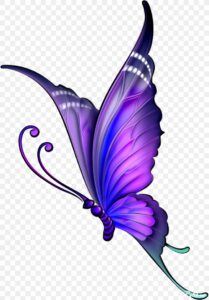It started with a quiet afternoon and a notebook. Emma, a young student feeling overwhelmed by school and social pressure, opened her sketchpad to distract herself. With no clear plan, she began to draw a butterfly—something she remembered from a nature walk. Its wings unfolded on the page slowly, line by line. What began as a distraction became a gentle release. Her thoughts calmed. Her breath slowed. In that moment, butterfly drawing became her refuge.
Butterfly drawing isn’t just about art—it’s about expression, stillness, and the power of small things to make a big difference. Whether you’re a child doodling with crayons or an adult picking up a pencil after years, drawing butterflies is an accessible, joyful way to reconnect with your creative side.
Why Butterflies?
The butterfly is one of nature’s most powerful symbols. It represents change, freedom, and transformation. From a caterpillar to a cocoon to a creature that soars—it’s the ultimate story of growth.
That’s one reason why people are naturally drawn to butterflies. We relate to them. And artistically, they offer the perfect balance of structure and freedom. They have symmetry, patterns, and endless color options, making them ideal subjects for both beginner and advanced artists.
Drawing a butterfly isn’t just about making something pretty—it’s about telling a story. Your story.
The Benefits of Drawing
You don’t need to be an artist to benefit from drawing. Studies have shown that the simple act of sketching—even for a few minutes—can help:
-
Lower stress levels
-
Increase focus and patience
-
Build confidence in self-expression
-
Improve hand-eye coordination
-
Stimulate the imagination
Drawing, especially something as detailed as a butterfly, helps slow down our racing thoughts. It gives us a reason to pause and pay attention to tiny, beautiful things we often miss.
Getting Started with Butterfly Drawing
You don’t need expensive tools or fancy techniques. All you need is:
-
Paper (any kind will do)
-
A pencil
-
An eraser
-
Optional: markers, colored pencils, or watercolor
Here’s a simple guide to get you started:
-
Draw the Body: Begin with a narrow oval shape for the butterfly’s body. Add two short lines with small circles for the antennae.
-
Outline the Wings: Sketch one large wing on each side of the top, and smaller ones below. Think of the wings as large, soft leaves attached to the body.
-
Add Patterns: Butterflies have symmetrical patterns—circles, lines, and dots. Mirror your design on both sides, or create your own fantasy version.
-
Color It In: Choose colors that make you feel something—joy, calm, curiosity. Real butterflies come in all shades, so there’s no wrong choice.
-
Add Details: Outline with pen, add a flower, or draw a background if you feel inspired.
Heading: Why Butterfly Drawing is Perfect for Beginners
If you’re new to drawing, starting with a butterfly drawing is a great choice. Here’s why:
-
Simplicity: The basic shapes are easy to learn and repeat.
-
Symmetry: Practicing symmetry improves your observation and coordination.
-
Flexibility: You can make your butterfly as realistic or as whimsical as you want.
-
Color Freedom: There are no strict rules for coloring butterflies—use any combination you love.
Even a few minutes a day of simple drawing can sharpen your skills and deepen your appreciation for nature and art.
Drawing as a Mindful Practice
We often think of mindfulness as sitting quietly and focusing on our breath. But mindfulness can also happen through creativity.
When you draw, you naturally begin to observe more closely. You notice the curve of a wing, the rhythm of a pattern, the blending of colors. Your thoughts become quieter as your hand moves. You enter a state of calm concentration.
Butterfly drawing can become a mindful practice you return to anytime you feel anxious, distracted, or simply need a break from the digital world.
Drawing with Children and Loved Ones
Butterfly drawing isn’t just a solo activity—it’s a beautiful way to bond with others. Parents can sit and draw with their kids. Teachers can use it as a fun classroom project. Friends can share butterfly sketches as little notes of encouragement.
With children, butterfly art teaches patience, observation, and self-expression. It gives them a sense of achievement and offers a non-verbal way to express emotions.
You can also use butterfly drawings for:
-
Handmade greeting cards
-
Journals or scrapbooks
-
Wall art and home decor
-
Gifts for friends or family
Even a simple drawing, done with heart, can bring a smile to someone else.
Taking Inspiration from Real Life
Try observing butterflies in real life or online. Notice how they land softly on leaves, how their wings shimmer in the sunlight, and how their patterns change with each movement.
Take photos or screen captures for later reference. Try drawing from memory or combining the features of different butterflies into one.
Let your imagination soar as freely as their wings.
What to Do If You Get Stuck
Creative blocks are normal, especially when you’re just starting out. Here are a few tips to keep going:
-
Trace first: Print out a butterfly and trace it to understand shapes and symmetry.
-
Break it down: Focus on drawing just one wing or a pattern instead of the full butterfly.
-
Use color prompts: Choose three random colors and build your design around them.
-
Make it fun: Turn your butterfly into a character with a story—where is it flying? What’s its name?
Don’t worry about making perfect art. Every drawing, even a messy one, is part of your growth.
The Magic of Small Things
In a world filled with loud headlines and endless scrolling, something as small and gentle as a butterfly can remind us of what matters—quiet moments, soft colors, and the beauty of change.
Butterfly drawing isn’t just a hobby. It’s a way to tell your story, explore your feelings, and create a little beauty where you are. With every sketch, you’re learning to see again—to slow down, look closely, and let your hands express what words sometimes cannot.
conclusion
So find a pencil, take a breath, and let your imagination fly. Whether it’s your first drawing or your fiftieth, each butterfly you create is a quiet celebration of your creativity.
And just like the butterfly, you don’t need permission to grow wings. You already have them—sometimes, you just need to draw them to remember.







